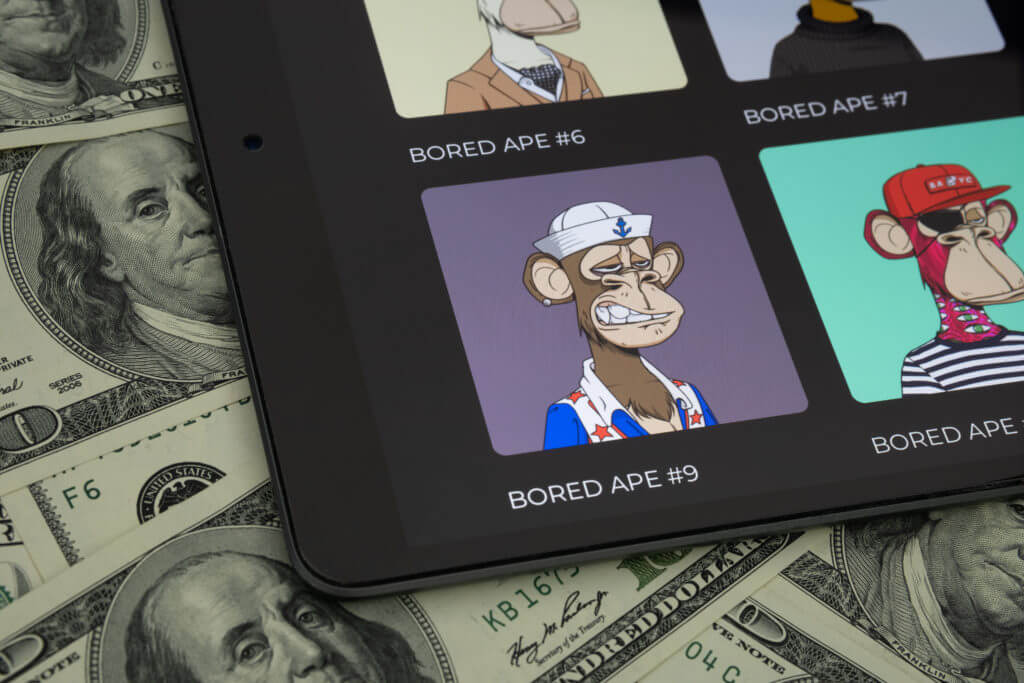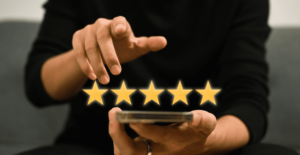So, after watching all of the crypto ads at the Super Bowl last week, I started to wonder more about how real this web3 thing is. I mean, if Coinbase can spend $14 million to put a QR code on the screen, the least I can do is understand the digital realm it’s creating, right?
But after reading a bit about web3, it started to remind me of how we at Enablix talk about sales enablement, and how we believe it’s going to change in the near future. In this post, I’m going to outline how some of the main tenets of (the potential) web3 apply to SE, and how enablement managers should think about putting their teams in the best place possible going forward. And, while I’m not giving away any free bitcoin, I think there’ll be some takeaways that will make reading worth it.
Note: For my discussion of web3, I’m relying on many sources – but primarily FreeCodeCamp’s summary as well as the classic web3 Wikipedia Page.
Tl;dr: As web3 grows on popularity based on the idea of a decentralized, secure, and self-governing platform, sales enablement will continue to shift in a similar direction, with enablement materials available in all applications central to a sales reps' workflow while content creation will shift to be more heavily sales dependent. Also, in writing this, I'm becoming convinced that web3 doesn't solve any of the practical issues we face in web2. But that's besides the point
What is web3?
There are a bunch of ways to answer that question – but I’d argue that the simplest definition is to contrast it with what web 1 and 2 were:
Web 1.0: Web 1.0 was basically the first version of the internet. Most people on the web consumed content, and the creators were typically developers who built websites that contained information in text or image format (anyone remember geocities?). Web 1.0 lasted approximately from 1991 to 2004.
Web 2.0: Today’s web. We’re all content creators sharing our thoughts amid several platforms that are primarily owned by a handful of companies. Infrastructure is largely centralized through a few big companies (Amazon, Google, Social Media Companies, etc.), and privacy is, well, “meh”.
Web 3.0 is a little different. While the full definition of what web3 can be is pretty exhaustive, I’m going to boil it down to 3 things:
- Distributed
- Self-Governing
- Verifiable
In web 3, applications don’t run on single servers in the cloud – rather they are powered by decentralized blockchain technology that potentially has the ability to create a much more secure and elastic framework for interactions.
How does this affect sales enablement?
Am I arguing that all sales enablement platforms are going to be built on the blockchain this year? No.
However, there are some pretty important parallels between how web3 could be constructed, and how sales enablement practitioners should be thinking about empowering their teams from old sales enablement strategies (we’ll call it se2) to new ones (se3). Let’s break this down point-by-point:
The Future of sales enablement is distributed
- In web2, applications were powered by centralized “gatekeepers” that gave platform to content, whereas in web3 the application and infrastructure will be largely distributed among devices that use the app.
- Similarly, in se2 (my term) sales and marketing collateral was hosted in standalone enablement platforms that sales reps would log into, but in se3 all collateral will be distributed among the sales applications that reps use daily.
Collateral, whether it be public facing assets, internal content, or training materials, is only going to get more important as seller-buyer relationships continue to go online and increasingly start outside of typical channels.
However, because of these changing trends, content needs are changing from “search for a big case study” to “what 15 second snippet can I send right now”. This means that content MUST be effectively distributed throughout the sale person’s day-to-day tools. Stop making reps log into standalone sales enablement tools, but integrate with their tools today. This means making collateral of all kinds available in:
- Your CRM (Salesforce, Hubspot, etc.)
- Messaging Tools (Teams, Slack)
- Email (Gmail, Outlook)
- Even your browser! Calendly does a great job of detailing what this should look like
Think less about the platform, and more about the salesperson workflow. You’ll end up with dozens of places salespeople interact with their prospects – that’s good, and it’s also what distributed sales enablement looks like.
Download the Sales Enablement Buyer’s Guide: Integrations Deep Dive
Whether you’re looking for new sales enablement software or trying to maximize the use of your existing platform, a key question you need to answer is how you fit an SE platform into your current sales & marketing application ecosystem without disrupting your current set up.
(all fields optional)
SE Materials Will Be Generated Primarily By The Sales Team
- In web2, platforms governed what could be said and done within their apps, whereas in web3 the decentralized nature meant that the users themselves ‘self-govern’ the content
- In se2, collateral came from sales enablement managers and PMM’s who made material for the sales team. In se3, the content will be curated from the team’s own interactions, making every prospect call and message a potential piece of content
Beginning in 2020, companies began to see how valuable sales and marketing content can be within the sales cycle, and began to heavily invest in creating collateral for their sales cycles’. Unfortunately, this has turned enablement managers and PMM’s into content centers.
However, there’s no real reason that sales content needs to originate outside of the sales team. Every call – successful or otherwise, likely has multiple discussion points and places where new or seasoned reps can learn from. SE3 will have content creation start with the sales team – prospect email replies, call recordings and interactions will be the source of >50% of content, both for internal sales training but also for external consumption. Systems should be flexible enough to allow seamless two-way communication on content regardless of the type, where sales suggests ideas but also responds in real-time to content updates.
Writing about the things that prospects are talking about is not only a more sustainable pattern of content creation, it’s going to be far more relevant to your target audience. This shifts the role of SE manager and PMM to less of a content mill and more of a curator – taking sales suggestions and content beginnings and refining them into something suitable for a training or company Linkedin post.
Sales Enablement Collateral Will Come From A Single Source Of Truth
- In web2, security risks and phishing attacks are prevalent, but web3 promises all transactions and credentials to be machine verifiable, impossible to have identities stolen or impersonated (whether or not that is true is dubious at best)
- Similarly, in se2, reps are never 100% sure if they have the latest copy of a case study or presentation. In se3, reps will only ever have access to brand-approved and up-to-date material, without sifting through multiple versions of a doc
This one seems like a no-brainer, but it’s still an ongoing issue for what feels like a heavy majority of enablement teams.
When marketing materials are all over the place, it’s impossible for reps to consistently stay up to date on what the ‘latest and greatest is’. Let’s quickly reiterate what doesn’t work:
- Sending out slack updates with latest copies that quickly get buried in other conversation
- Weekly newsletters that never get read because everyone’s inbox is flooded
- Remote meetings where 45 minutes go by with no questions
- A sharepoint site constantly updated by the team that becomes difficult to look at, let alone parse
When collateral access gets distributed, there won’t be a reason for reps to store old copies on their machines, and it will be easy to control lineage and versioning from a single content source feeding these outlets. Reps will have the ability to see full change logs for each piece of content, and be assured that all content is in line with what marketing wants to be shared.
All Aboard the Hype Train
Taking it back to how we got here… how realistic is this?
Well, as many have noted, the full online experience of web3 is still far away for most people, and I think it’s safe to say the same is true of SE3 as well. And while platforms will evolve to offer functionality even beyond what I’ve mentioned here, let’s the order of importance for sales enablement:
People > Processes > Tools
So in a way, the real future of sales enablement isn’t about the sales OR the enablement, but the friends we make along the way.
I’m sorry. I had to.




